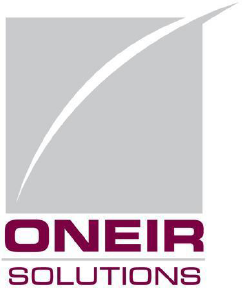Hazard Analysis Critical Control Point (HACCP) is an approach to food safety that is systematic and preventive. It is recommended by the Codex Alimentarius Commission, the United Nations international standards organization for food safety. HACCP is used by most countries around the world. It has been in use since the 1960s.
In the early 1960s, the US National Aeronautics and Space Administration (NASA) asked US food-product giant Pillsbury to develop food for astronauts. They wanted food that was not only tasty, but safe to eat in zero gravity. HACCP was originally developed for this project.
HACCP goes beyond inspecting finished food products. It helps to find, correct, and prevent hazards throughout the production process. These include physical, chemical, and biological hazards.
HACCP is not just used in food production. It’s applied in other industries around the world, such as cosmetics and pharmaceuticals.
There are seven universally-accepted HACCP principles. Every country that uses HACCP follows these principles.
Principle 1: The first principle is hazard analysis. At this stage, a plan is laid out to identify
- all possible food safety hazards that could cause a product to be unsafe for consumption, and
- the measures that can be taken to control those hazards.
For example: at the cooking step of the production process, one of the identified hazards is the survival of pathogens due to inadequate cooking time or temperature.
Principle 2: The second principle is identifying critical control points. These are the points in the production process where an action can be taken to prevent, eliminate, or reduce a food safety hazard to an acceptable level.
For example: the cooking step is considered a “critical control point” because control measures are necessary to deal with the hazard of pathogens surviving the cooking process.
Principle 3: The third principle is establishing critical limits for each critical control point. A critical limit is the limit at which a hazard is acceptable without compromising food safety.
For example: critical limits” at the cooking stage include specific time and temperature for cooking the product.
Principle 4: The fourth principle is establishing monitoring procedures for critical control points. Highly detailed monitoring activities are essential to make sure the process continues to operate safely and within the critical limits at each critical control point.
For example: monitoring procedures at a cooking critical control point could include taking the internal temperature of the product with a specialized thermometer.
Principle 5: The fifth principle is crucial: establishing corrective actions. These actions must be taken to bring the production process back on track if monitoring indicates that deviation from critical limits has occurred. In food production, correcting problems before end-stage production is far more effective than waiting until a product is finished to test it.
For example: if the required internal temperature has not been reached, a corrective action would require that the product be cooked further. If the cooking temperature cannot be reached, another corrective action would call for the product to be held and destroyed.
Principle 6: The sixth principle is establishing verification procedures. Verification means applying methods, procedures, tests, sampling and other evaluations (in addition to monitoring) to determine whether a control measure at a critical control point is or has been operating as intended. Verification activities also ensure that the monitoring and the corrective actions are done according to a company’s written HACCP program.
Principle 7: The seventh principle is record keeping. Records must be kept by the company to
- demonstrate the effective application of the critical control points, and
- assist with official verification (which is done, in Canada, by the Canadian Food Inspection Agency).
Records must be established to document - the monitoring and verification results, and
- all information and actions taken in response to any deviations found through monitoring and verification.
For example: the plant employee responsible for monitoring a cooking critical control point completes a cooking log sheet. This sheet includes the date, the start and finish time, the temperature and the employee’s signature. If a deviation has occurred in the production process, the responsible plant employee records the details in a deviation log book.
In 2005, HACCP became mandatory in Canada for federally-registered meat and poultry establishments. (The legislation that pertains to this is the Meat Inspection Regulations). In these establishments, the Canadian Food Inspection Agency (CFIA) uses the Compliance Verification System to verify an establishment’s compliance to their HACCP system. In federally-registered fish establishments, the principles of HACCP are followed under the Quality Management Program, or QMP.
The QMP was established as a mandatory program in 1992. It is the first mandatory food inspection program in the world that is based on HACCP principles.
HACCP is not mandatory in federally-registered dairy, processed product, egg, honey, maple and hatchery establishments. However, the CFIA strongly recommends that these establishments adopt HACCP.
Developing, implementing, and maintaining a HACCP system is industry’s responsibility. This is because food manufacturers have the most control over the products they manufacture, so they have the greatest impact on the safety of their products.
Date modified:
2012-08-30
Source: http://www.inspection.gc.ca/about-the-cfia/newsroom/food-safety-system/haccp/eng/1346306502207/1346306685922


